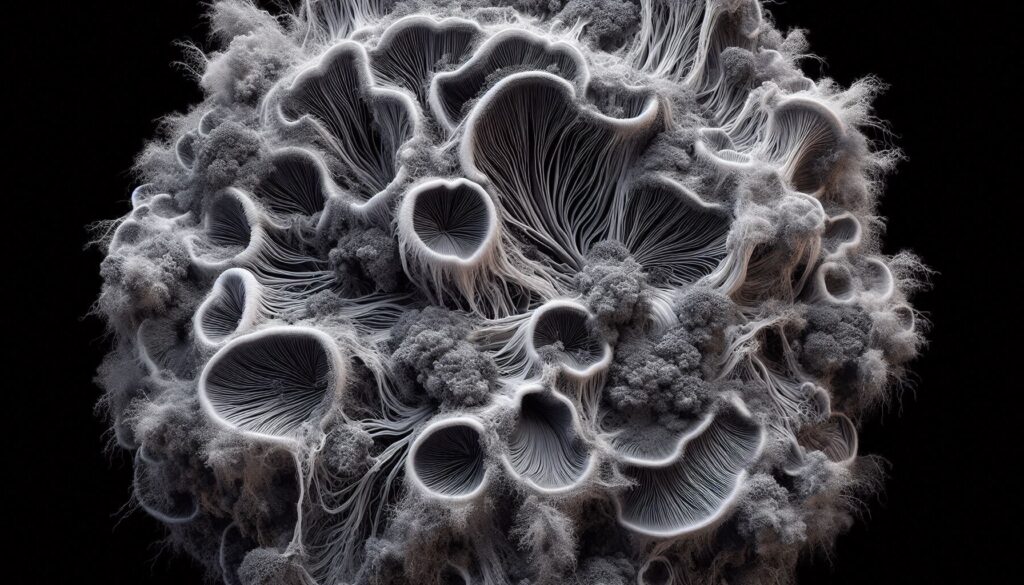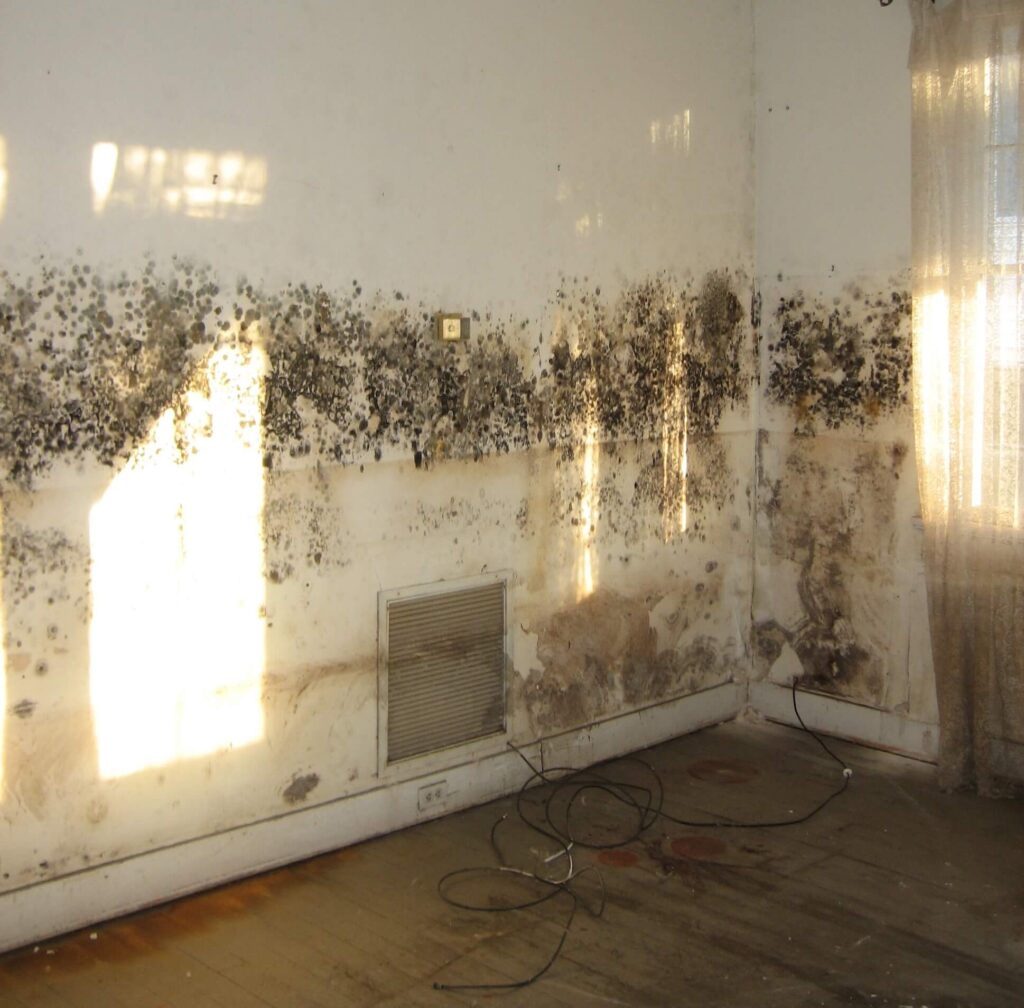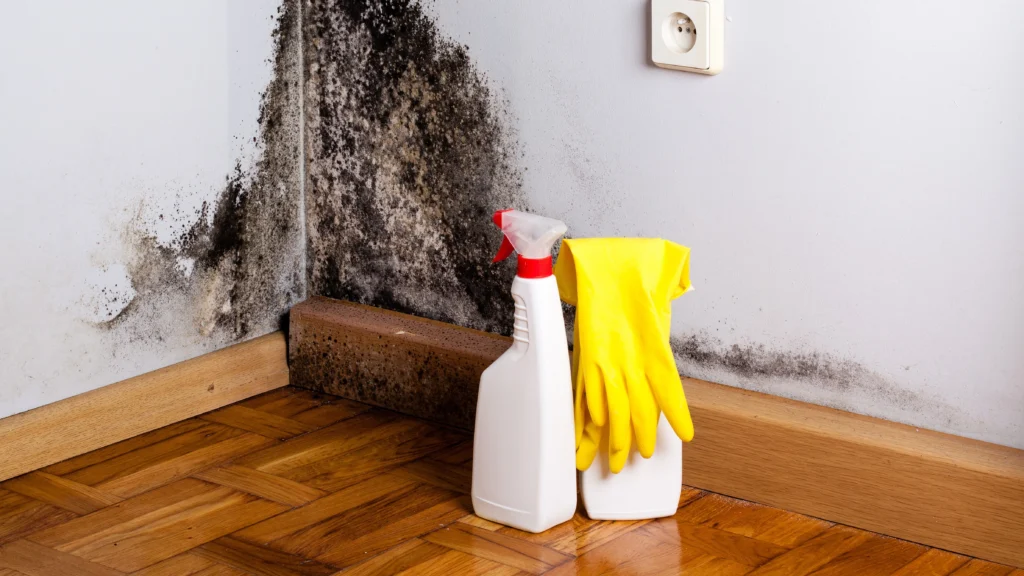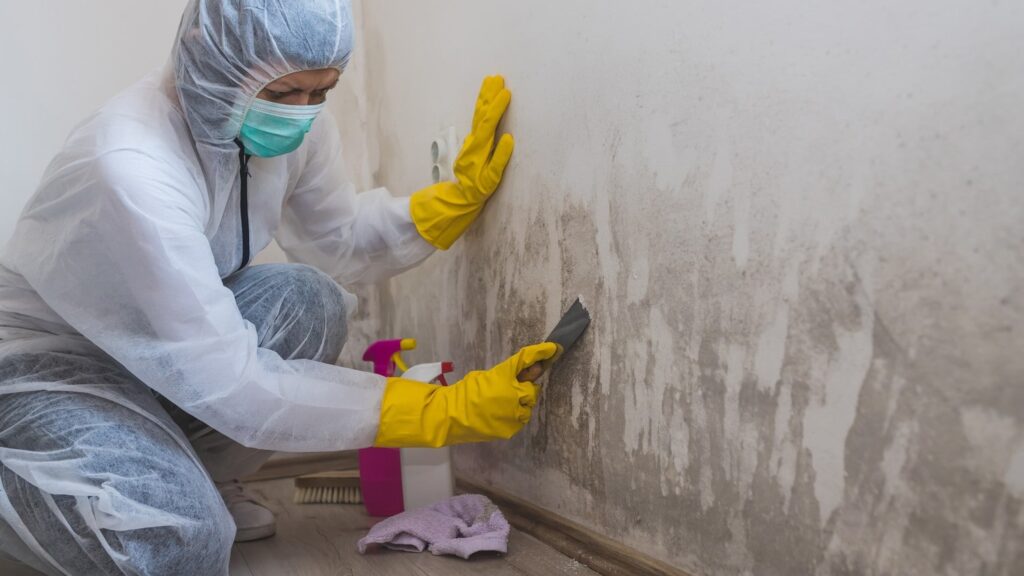
Black Mold: Identification, Health Risks, and How to Remove It
Black mold is one of the most concerning types of mold for homeowners due to its potential health risks and ability to spread rapidly in damp areas. Recognizing, treating, and preventing black mold is crucial to protect your home and health. In this comprehensive guide, we’ll explore what black mold is, why it’s dangerous, how to identify it, and, most importantly, how to safely remove it from your home. By applying this information, you’ll be better equipped to handle black mold and prevent its return.
What Is Black Mold?
Black mold, scientifically known as Stachybotrys chartarum, is a dark, greenish-black fungus that typically grows on materials with a high cellulose content, such as wood, drywall, and fiberboard, when they become wet. Black mold thrives in damp, humid environments, often forming colonies within 24 to 48 hours in the right conditions.

Why Does Black Mold Grow?
Black mold spores are everywhere, but they only grow into visible colonies when they find a damp environment. Common sources of moisture that lead to mold growth include:
- Leaking pipes or roofs
- Flooding and water damage
- Poor ventilation in high-humidity rooms (e.g., bathrooms and basements)
- Condensation around windows and doors
How to Identify Black Mold
Identifying black mold is the first step toward safe removal. Here’s how to recognize it:
1. Appearance
Black mold has a distinct appearance, usually as dark green or black spots that spread in a patchy, circular pattern. Its texture can range from slimy to fuzzy, depending on the level of moisture.
2. Odor
Black mold often emits a musty or mildew-like odor, which intensifies as the mold colony grows. This smell is an indicator of dampness and should be addressed even if no visible mold is present.
3. Location
Black mold commonly grows in damp, poorly ventilated areas. Check for mold growth around:
- Basement walls
- Bathroom tiles and around sinks
- Window sills and door frames
- Underneath carpets after water exposure
If you find or suspect black mold in your home, take immediate action to assess and remove it, as prolonged exposure can pose serious health risks.

Health Risks of Black Mold Exposure
One of the main reasons black mold is so concerning is its potential impact on health. While not all molds are toxic, black mold produces mycotoxins, which can lead to a variety of symptoms and long-term health problems, especially for individuals with respiratory issues or weakened immune systems.
Symptoms of Black Mold Exposure
Exposure to black mold can cause a range of symptoms, including:
- Respiratory Issues: Coughing, sneezing, and shortness of breath are common symptoms, especially in individuals with asthma or allergies.
- Skin Irritations: Rashes or hives may develop after contact with black mold.
- Eye Irritation: Red, itchy eyes can occur when black mold spores are airborne.
- Headaches and Fatigue: Prolonged exposure can lead to chronic fatigue and persistent headaches.
If you or a family member experience these symptoms and suspect black mold exposure, consult a healthcare provider, especially if symptoms worsen in areas where mold is present.
High-Risk Groups
Individuals most at risk for adverse health effects from black mold exposure include:
- Infants and young children
- Elderly individuals
- Those with respiratory conditions (e.g., asthma, COPD)
- People with compromised immune systems
Steps to Safely Remove Black Mold
Once you’ve identified black mold, it’s essential to take immediate action to remove it. Black mold can spread quickly, and improper removal can worsen the problem by spreading spores throughout the home.
1. Gather Necessary Safety Equipment
Before starting the removal process, wear proper safety gear to avoid direct contact with mold spores. This includes:
- N95 mask or respirator
- Rubber gloves
- Safety goggles
- Disposable coveralls or old clothing that you can discard afterward
2. Prepare the Area
- Ventilate the Space: Open windows and doors to increase airflow, which helps to reduce the concentration of mold spores in the air.
- Seal Off the Area: Use plastic sheeting to block off the area where you’re working, especially if mold is extensive. This helps prevent spores from spreading to other parts of the home.
3. Use an Effective Mold Cleaner
Various cleaning solutions can effectively remove black mold. Consider the following options:
- Commercial Mold Removers: Products specifically designed to kill mold spores, such as RMR-86, are highly effective and readily available.
- Bleach Solution: Mix one cup of bleach with one gallon of water. This solution kills mold on non-porous surfaces like tile and glass but may not be as effective on porous materials.
- Vinegar: A natural option, white vinegar can kill up to 82% of mold species and is a safer choice for homes with pets or young children. Spray undiluted vinegar on the mold and let it sit for an hour before scrubbing.
- Hydrogen Peroxide: A 3% hydrogen peroxide solution can be applied directly to moldy surfaces and is effective for both mold removal and stain reduction.
4. Scrub the Mold Thoroughly
Using a stiff brush, scrub the affected area to remove all traces of mold. Rinse with water, if needed, and allow the area to dry completely.
5. Dispose of Contaminated Materials
Place any contaminated materials (sponges, gloves, or disposable clothing) in a sealed plastic bag and dispose of them to prevent further contamination.
6. Prevent Future Mold Growth
After removing the mold, take preventive steps to ensure it doesn’t return:
- Fix Leaks: Repair any leaky pipes or roofs to eliminate moisture sources.
- Control Humidity: Use dehumidifiers in high-humidity areas and aim to keep indoor humidity levels below 50%.
- Improve Ventilation: Install exhaust fans in bathrooms, kitchens, and basements to reduce moisture buildup.
- Clean and Inspect Regularly: Regularly inspect areas prone to dampness and clean surfaces to prevent mold growth.

Preventing Black Mold: Key Tips and Maintenance
The best way to protect your home and health from black mold is through preventive maintenance. By following these tips, you can significantly reduce the chances of mold taking hold in your home:
1. Use a Dehumidifier
Mold thrives in humid environments, so using a dehumidifier in areas like basements can prevent mold growth. Aim to keep indoor humidity between 30% and 50%.
2. Seal Windows and Doors
Properly sealed windows and doors reduce moisture entry, especially during humid or rainy seasons. Regularly check and seal any gaps to prevent condensation.
3. Ventilate Damp Areas
Ensure bathrooms, kitchens, and laundry rooms have proper ventilation. Installing exhaust fans or opening windows after using these spaces can make a big difference.
4. Fix Water Leaks Promptly
Water damage from leaky pipes, roofs, or appliances can quickly lead to mold. Address leaks immediately and dry any affected areas to reduce mold risk.
5. Monitor Humidity Levels
Using a hygrometer, measure indoor humidity levels regularly, especially in moisture-prone areas. This helps you detect and address humidity issues before mold develops.
When to Call a Professional
If mold growth covers more than 10 square feet or if it’s located in hard-to-reach areas, consider calling a professional mold remediation service. Professionals have the tools and experience to safely and effectively remove mold, especially in cases where mold may be hidden within walls or ceilings.
Hiring a professional is recommended if:
- Mold is affecting your HVAC system.
- Black mold has spread over a large area.
- You or someone in your home has a health condition worsened by mold exposure.

Frequently Asked Questions About Black Mold
Q: Is black mold always toxic?
A: Not all black mold is toxic, but Stachybotrys chartarum can produce mycotoxins that may lead to health problems, particularly in sensitive individuals.
Q: Can I remove black mold myself?
A: Small patches (under 10 square feet) can typically be removed safely with appropriate precautions, but extensive mold infestations should be handled by professionals.
Q: How can I tell if it’s black mold?
A: Black mold is often dark green or black and grows in damp areas. If unsure, consult a professional for testing and identification.
Q: Does bleach kill black mold?
A: Bleach can kill surface mold on non-porous surfaces but may not be effective on porous materials where mold roots have penetrated.
Final Thoughts
Black mold is a serious issue that requires prompt attention and effective removal methods. By understanding how to identify, treat, and prevent black mold, you can protect both your home and your health. Use the tips and methods outlined here to manage mold growth, improve your indoor environment, and ensure a healthier living space. Regular maintenance and a vigilant approach to moisture control will make a world of difference in preventing black mold from returning.
![]()